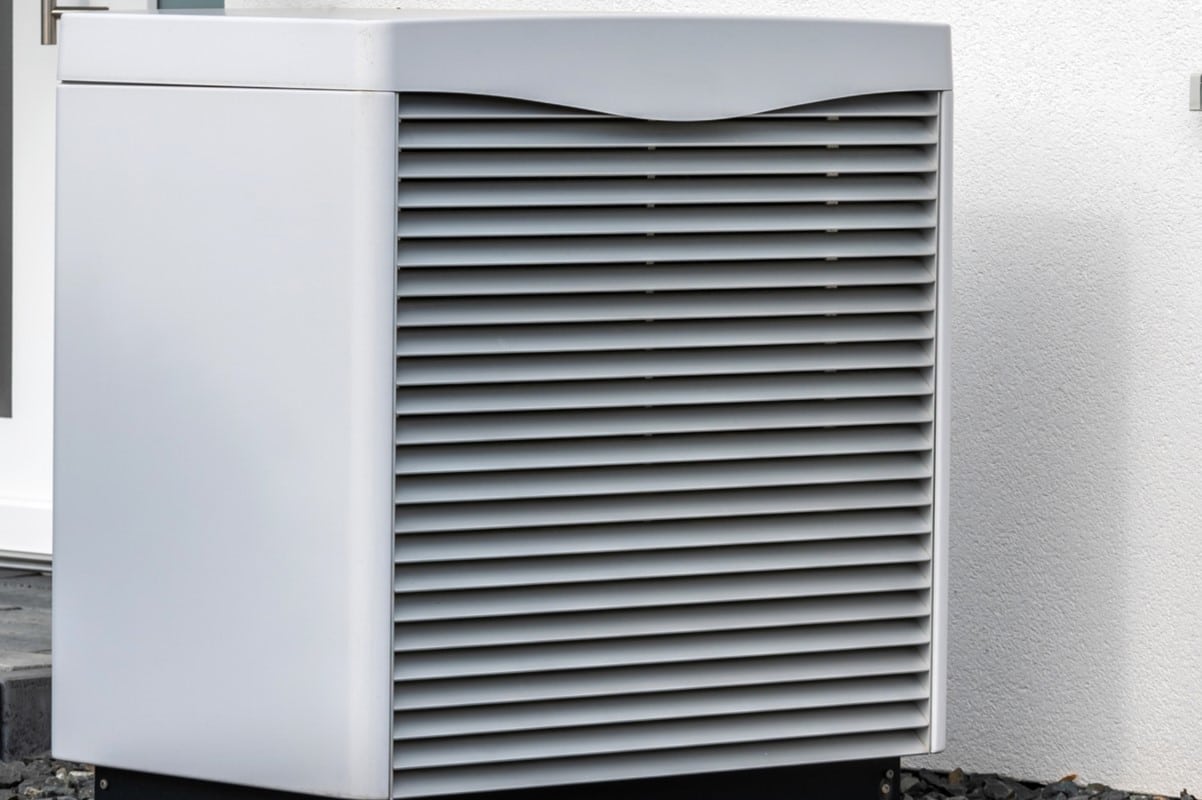Summary:
- Explore the difference: Understand what makes ductless mini-splits unique.
- Consider the benefits: Learn why upgrading is ideal for homes in Bluffton, Beaufort, and Hilton Head.
- Cost insights: Discover what you need to know about the investment.
- Energy efficiency: Find out how these systems can reduce your utility bills.
- Custom comfort: Tailor your home’s climate to your exact preferences.
- Installation details: Know what to expect during the process.
- Compare options: Heat pumps vs. mini-splits—what’s right for you?
Deciding between a heat pump or ductless mini-split system for your home? Both options offer energy-efficient heating and cooling, but which is right for you? In this guide, we’ll explore the benefits, costs, and other key factors to help you make the best choice for your home in Bluffton, Beaufort, and Hilton Head.
What is a Ductless Mini-Split System?
Are you curious about how a ductless mini-split system could transform your home? This modern HVAC solution offers both heating and cooling without the need for extensive ductwork. A ductless mini-split system consists of an outdoor compressor and one or more indoor air-handling units, connected by a conduit. These indoor units are typically mounted on walls, providing targeted comfort to specific rooms or zones within your home.
Unlike traditional HVAC systems that rely on ducts to distribute air, mini-splits deliver conditioned air directly to each area. This makes them highly efficient and ideal for homes in Bluffton, Beaufort, and Hilton Head, especially in older houses or room additions where installing ductwork might be impractical.
One of the standout features of a ductless mini-split system is its zoning capability. You can control the temperature in individual rooms, allowing for personalized comfort while reducing energy waste. Imagine maintaining a cool bedroom while letting the rest of the house remain at a more moderate temperature. This flexibility not only enhances comfort but also leads to significant energy savings.
Additionally, these systems are known for their quiet operation and sleek design, blending seamlessly with your home decor. If you’re looking for a way to upgrade your home’s climate control without the hassle and cost of installing ducts, a ductless mini-split system might be the perfect solution.
Why Upgrade? Benefits for Bluffton, Beaufort, and Hilton Head Homes
Is it time to upgrade your home’s heating and cooling system to ductless mini-split system? If you live in Bluffton, Beaufort, or Hilton Head, upgrading to a ductless mini-split or heat pump system can offer several key benefits tailored to your region’s climate and lifestyle.
- Energy Efficiency
The coastal areas of Bluffton, Beaufort, and Hilton Head experience a wide range of temperatures, from hot, humid summers to cooler winters. Ductless mini-split systems and heat pumps are designed to handle these fluctuations efficiently, providing consistent comfort while using less energy compared to traditional HVAC systems. This efficiency can lead to lower utility bills, making your home more cost-effective to maintain. - Enhanced Comfort
With a ductless mini-split system, you can say goodbye to hot and cold spots in your home. These systems allow you to create individual climate zones, meaning you can set different temperatures in different rooms. Whether it’s a sunroom that gets too warm or a basement that’s too chilly, a mini-split system can be adjusted to ensure every area of your home is comfortable. - Improved Air Quality
In areas prone to humidity like Bluffton, Beaufort, and Hilton Head, air quality is a significant concern. Ductless systems often include advanced filtration, reducing dust, allergens, and other pollutants from circulating in your home. This is especially beneficial in coastal areas where humidity can lead to mold and mildew if not properly managed. - Space-Saving Design
Homes in these areas often blend historic charm with modern amenities, making space a premium. Ductless mini-split systems and compact heat pumps take up less space than traditional systems. Their sleek design can be installed with minimal disruption to your home’s aesthetics.
Energy Efficiency: Saving on Utility Bills
Are you tired of high utility bills every month? Upgrading to a ductless mini-split or heat pump system can be a game-changer in terms of energy efficiency, leading to substantial savings on your utility costs.
- Superior Efficiency
Ductless mini-split systems and heat pumps are designed to use energy more efficiently than traditional HVAC systems. Unlike systems that push air through extensive ductwork, mini-splits deliver air directly into the room. This direct approach eliminates the energy losses often associated with duct systems, where up to 30% of the energy can be wasted. Heat pumps, on the other hand, move heat rather than generating it, which makes them highly efficient, especially in moderate climates like those in Bluffton, Beaufort, and Hilton Head. - Zoned Heating and Cooling
One of the standout features of a ductless mini-split system is its ability to create different climate zones in your home. You can heat or cool only the rooms you are using, rather than the entire house. This zoning capability can lead to significant energy savings, as you’re not wasting energy on unoccupied spaces. Imagine being able to turn down the heat in your bedroom while keeping your living room comfortable, all without compromising on comfort. - Advanced Technology
Modern mini-splits and heat pumps come equipped with advanced technology that further enhances their efficiency. Features like inverter technology allow the system to adjust its output based on the current demand, using only the energy necessary to maintain the desired temperature. This contrasts with traditional systems that operate in an on/off cycle, consuming more energy each time they start up. - Lower Carbon Footprint
In addition to saving money, these systems also reduce your home’s carbon footprint. By using less energy, you’re contributing to a greener environment. Heat pumps, in particular, are known for their eco-friendly operation, as they use electricity rather than fossil fuels to move heat. - Rebates and Incentives
In Bluffton, Beaufort, and Hilton Head, homeowners can often take advantage of local and federal rebates and incentives for installing energy-efficient systems. These programs are designed to encourage the adoption of energy-saving technologies, reducing the overall cost of your upgrade. This means you can enjoy both immediate and long-term savings.
Customizable Comfort: Tailoring Your Home’s Climate
Ever wished you could customize the temperature in each room of your home? With a ductless mini-split or heat pump system, you can do just that, creating personalized comfort zones throughout your living space.
- Zoned Temperature Control
One of the most appealing features of ductless mini-splits is their ability to provide zoned temperature control. Each indoor unit operates independently, allowing you to set different temperatures in different rooms. Whether you prefer a cooler bedroom for sleeping or a warmer living room for lounging, you have full control over your home’s climate. This zoned approach not only enhances comfort but also improves energy efficiency, as you’re not wasting energy on rooms that aren’t in use. - Remote and Smart Control Options
Modern mini-splits and heat pumps often come with remote controls or smart technology, allowing you to manage your home’s climate from anywhere. Whether you’re at home or away, you can adjust the temperature using your smartphone or tablet, ensuring your home is always at the perfect temperature when you arrive. This convenience adds a layer of comfort and efficiency, giving you control over your environment with just a few taps. - Quiet Operation
If you value peace and quiet, you’ll appreciate the whisper-quiet operation of ductless mini-split systems. Unlike traditional HVAC systems that can be noisy when they kick on, mini-splits operate almost silently. This is especially beneficial for bedrooms, home offices, or any area where noise can be a distraction. The quiet performance enhances your overall comfort, allowing you to enjoy a peaceful environment without the hum of a traditional system. - Enhanced Aesthetics
Ductless mini-split systems are designed with aesthetics in mind. The sleek, modern indoor units can be mounted high on a wall, out of sight, or even concealed within a ceiling. This design flexibility means you can maintain the beauty of your home’s interior while enjoying the benefits of advanced climate control. Unlike bulky radiators or window units, ductless systems blend seamlessly into any room, offering both form and function. - Consistent Comfort Year-Round
Ductless mini-splits and heat pumps are designed to provide consistent comfort throughout the year. These systems offer both heating and cooling, making them versatile solutions for the varying climate in Bluffton, Beaufort, and Hilton Head. No more relying on separate systems for winter and summer—these units ensure your home stays comfortable regardless of the season.

Installation Process: What to Expect
Are you considering a ductless mini-split system or heat pump system but unsure about the installation process? Understanding what to expect can help you prepare and ensure a smooth transition to your new system.
- Initial Assessment and Planning
The installation process begins with an initial assessment by a qualified HVAC contractor. They will evaluate your home’s layout, size, and specific heating and cooling needs. This step is crucial for determining the best placement of indoor units and ensuring the system will efficiently meet your comfort requirements. The contractor will also discuss the options for the outdoor unit, which is typically installed on an exterior wall or on the ground. - Choosing the Right Ductless Mini-split System
Based on the assessment, your contractor will recommend the appropriate system size and configuration. This includes deciding on the number of indoor units (often referred to as heads) and their placement to create optimal climate zones in your home. For homes in Bluffton, Beaufort, and Hilton Head, where humidity and varying temperatures are common, selecting the right system is key to achieving maximum efficiency and comfort. - Installation Day
On installation day, the process generally takes a few hours to a full day, depending on the complexity of the system and the number of units being installed. The contractor will start by mounting the indoor units on the walls and connecting them to the outdoor unit via a conduit that carries refrigerant lines, power, and a condensate drain. One of the benefits of ductless mini-splits is that they require only a small hole in the wall for the conduit, minimizing disruption to your home’s structure. - Testing and Calibration
Once the units are in place, the contractor will test and calibrate the system to ensure it operates correctly. This includes checking the refrigerant levels, electrical connections, and thermostat settings. They will also demonstrate how to use the remote controls or smart app, so you can easily manage the system’s settings and customize the climate in each zone. - Clean-Up and Final Walkthrough
After the installation is complete, the contractor will clean up the work area, ensuring your home is left in good condition. They will also conduct a final walkthrough with you to explain the system’s operation, maintenance tips, and any warranty details. This is your opportunity to ask any remaining questions and ensure you’re comfortable with the new system. - Post-Installation Support
Many HVAC companies offer post-installation support, including maintenance services and troubleshooting. It’s important to schedule regular maintenance to keep your system running efficiently and to address any issues promptly.
Comparing Heat Pumps and Mini-Splits
Are you trying to decide between a heat pump and a ductless mini-split system for your home? Both options offer excellent benefits, but understanding their differences can help you choose the right solution for your needs.
- How They Work
Both heat pumps and ductless mini-split systems provide heating and cooling, but they operate differently. A heat pump is a versatile system that moves heat between the indoors and outdoors. In the summer, it extracts heat from your home and releases it outside, functioning like an air conditioner. In the winter, it reverses the process, pulling heat from the outside air (even in cold temperatures) and bringing it indoors.
A ductless mini-split system, on the other hand, is a type of heat pump that doesn’t require ductwork. It consists of an outdoor unit connected to one or more indoor units, each of which can independently heat or cool a specific zone in your home. This setup is ideal for homes without existing ductwork or for those looking to add climate control to specific areas.
- Flexibility and Zoning
One of the biggest advantages of ductless mini-splits is their zoning capability. With multiple indoor units, you can control the temperature in different rooms or zones independently. This is perfect for homes where different family members prefer different temperatures or for rooms that are used less frequently. In contrast, traditional heat pumps generally provide a uniform temperature throughout the home, which may not be as customizable. - Installation Considerations
Installation differs significantly between the two systems. Heat pumps typically require existing ductwork, making them a good option for homes that already have a central HVAC system. If your home lacks ducts, adding them can be expensive and disruptive. Ductless mini-splits offer a simpler installation process, as they require only a small hole for the conduit, making them ideal for older homes, additions, or spaces without ducts. - Cost Differences
In terms of cost, ductless mini-splits generally have a higher initial price due to the multiple indoor units and more complex installation. However, they often result in energy savings thanks to their zoning capabilities and efficiency. Heat pumps might have a lower upfront cost, especially if you already have ductwork, but the overall efficiency depends on the system’s size and the insulation of your home. - Ideal Applications
When deciding between the two, consider your home’s specific needs. Heat pumps are great for whole-home heating and cooling in areas with mild climates, making them a solid choice for Bluffton, Beaufort, and Hilton Head. Ductless mini-splits excel in situations where you need flexible, zoned climate control, or where ductwork isn’t feasible.
Maintenance Tips for Long-Lasting Performance
Want to ensure your ductless mini-split or heat pump system runs efficiently for years to come? Regular maintenance is key to maximizing the lifespan and performance of your HVAC system. Here are some essential maintenance tips to keep your system in top shape.
- Regular Filter Cleaning
The filters in your ductless mini-split or heat pump system play a crucial role in maintaining air quality and system efficiency. Over time, dust and debris can accumulate in the filters, reducing airflow and making the system work harder. It’s important to clean or replace the filters every one to three months, depending on the manufacturer’s recommendations and how often the system is used. Regular filter maintenance helps prevent strain on the system and ensures optimal performance. - Inspect and Clean the Outdoor Unit
The outdoor unit of your heat pump or mini-split system can collect dirt, leaves, and other debris, which can obstruct airflow and reduce efficiency. Periodically check the outdoor unit for any obstructions and gently clean the fins with a garden hose. Be careful not to use high pressure, as this can damage the delicate fins. Keeping the area around the outdoor unit clear of plants, leaves, and debris ensures proper airflow and helps the system run smoothly. - Schedule Professional Maintenance
While there are several maintenance tasks you can handle yourself, it’s also important to schedule annual professional maintenance. An HVAC technician will inspect the system, check refrigerant levels, test the thermostat, and clean the coils. They can also identify and address any potential issues before they become major problems. Regular professional maintenance not only extends the life of your system but also keeps it running efficiently, saving you money on energy bills. - Monitor System Performance
Keep an eye on how your system is performing. If you notice unusual noises, inconsistent temperatures, or higher-than-normal energy bills, these could be signs that your system needs attention. Addressing issues early can prevent costly repairs down the road. It’s also a good idea to monitor the system’s performance during extreme weather conditions, as this is when any potential issues are most likely to arise. - Keep the Indoor Units Clean
The indoor units of your ductless mini-split system should also be kept clean to maintain efficiency and air quality. Wipe down the unit’s exterior with a soft cloth and clean any dust from the vents. Make sure nothing is blocking the airflow around the unit, such as furniture or curtains. If the unit has a drain pan or condensate line, check it regularly to ensure there are no blockages or leaks. - Protect Your System During Extreme Weather
In Bluffton, Beaufort, and Hilton Head, your system might face high humidity and occasional storms. Protect the outdoor unit by ensuring it’s securely mounted and has proper drainage. During extreme cold or heat, avoid running the system at maximum capacity for extended periods, as this can strain the unit. Additionally, consider using a surge protector to protect your system from power surges during thunderstorms.

FAQ about Ductless Mini-split System
-
How long does it take to install a ductless mini-split system?
Installation typically takes one day, depending on the number of indoor units and the complexity of the setup.
-
Are ductless mini-splits expensive to run?
No, they are energy-efficient and can lower your utility bills by up to 30%.
-
Can I control a mini-split system remotely?
Yes, many systems come with remote or smartphone app control options for convenience.
-
How often should I clean the filters?
Clean or replace filters every 1-3 months to maintain efficiency and air quality.
-
Do heat pumps work well in cold weather?
Yes, modern heat pumps are designed to perform efficiently even in colder climates.











